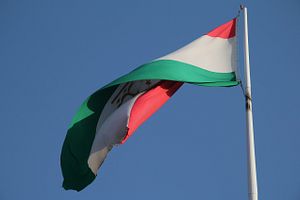Last week, the government of Tajikistan broke its general silence about a recent outbreak of violence at a prison in the country’s north.
What has been described as a “riot” apparently broke out near midnight on November 7 at a high-security prison in Khujand. Initial reports varied, as typically happens with breaking news events, with the casualty number ranging from 13 inmates to more than 25, before skyrocketing in the days that followed. According to Eurasianet, some independent media outlets had reported as many as 50 deaths.
In Brussels last week, Tajik Foreign Minister Sirojiddin Muhriddin told reporters that 21 inmates were killed during the incident. He said that “12 of the rioters had fought in Syria and Iraq alongside Islamic State militants” and that three others were in prison after convictions for membership in other, unspecified, extremist groups. According to RFE/RL’s reporting, Muhriddin also said that two other inmates were killed “while trying to help prison guards,” but provided no further explanation of that comment. Muhriddin also stated that two prison guards were killed and five others wounded.
Shortly after the incident, the Islamic State claimed responsibility, saying via its Amaq news agency that one of its fighters was responsible for the attack that sparked the riot. This claim is significant because it is the second time this year that the Islamic State has claimed responsibility for a violent incident in Tajikistan.
This summer, four foreign cyclists were killed in a car and knife attack reminiscent of other Islamic State inspired attacks around the world. That attack was followed by an Islamic State claim, backed by the release of a video that showed the five reported attackers pledging allegiance before the Islamic State’s black flag. Dushanbe, however, pushed aside the mounting evidence of an Islamic State link in favor of pinning the attack on the Islamic Renaissance Party of Tajikistan (IRPT), a one-legal political party that was condemned (erroneously, according to most regional observers) as an extremist group in 2015.
In this case, however, Dushanbe appears content to let the Islamic State claim stand.
Meanwhile, RFE/RL’s Tajik Service reported sources claiming that six prison officers, including a department chief, had been arrested on negligence charges. The arrests come amid mounting discussion regarding prison conditions. As Eurasianet noted, Akhbor, a Prague-based Tajik media outlet, reported that the initial confrontation at the prison was sparked by mistreatment of inmates. The response by Wester diplomatic missions suggests their concern in this same vein.
Charge d’Affaires Kevin Covert, the top U.S. diplomat in Tajikistan, joined a roundtable with several European ambassadors and the the Coalition Against Torture on November 19. The gathering was reportedly convened by the British Embassy. In a Facebook post, the U.S. Embassy in Tajikistan also noted that Covert met with senior officials from the Prosecutor General’s Office and the Ministry of Foreign Affairs “to learn about the steps the Tajik government has taken to investigate alleged violations and to insist that the rule of law be upheld.”
A few days prior, the U.S. Embassy posted a press release announcing that members of Tajikistan’s Ministry of Internal Affairs had completed the Foreign Terrorist Fighter – Operators and Investigators course, the “third Antiterrorism Assistance (ATA) course of 2018 sponsored by the U.S. Embassy’s Regional Security Office.” The release noted that since 2001, the U.S. government has provided training for more than 500 Tajik officials worth more than $7 million.
Tajikistan’s most notorious Islamic State member was a former special police commander, the beneficiary of U.S. training (as well as Russian training).
In the end, it’s unlikely a clear narrative about the prison riot will be made public. The Tajik government does not have a reassuring history of being straight with the facts, and the pieces of this puzzle — extremism and human rights — are about as sensitive as it gets. The Islamic State’s claim in this instance may be less believable than in the case of the summer attack on the cyclists, but is no less critical. Even if the Islamic State did not specifically instruct one of its fighters to cause problems in the prison, the fact remains that there are a sizable number of former Islamic State fighters in Tajik prisons (or those accused of connection to such groups). Dushanbe, this incident suggests, either doesn’t have de-escalation measures at hand that don’t involve killing or, frankly speaking, doesn’t have qualms about killing prisoners to re-establish control. This may engender further incidents, rather than quell them, and feed into the Islamic State’s pitch to Tajiks vulnerable to radicalization.































